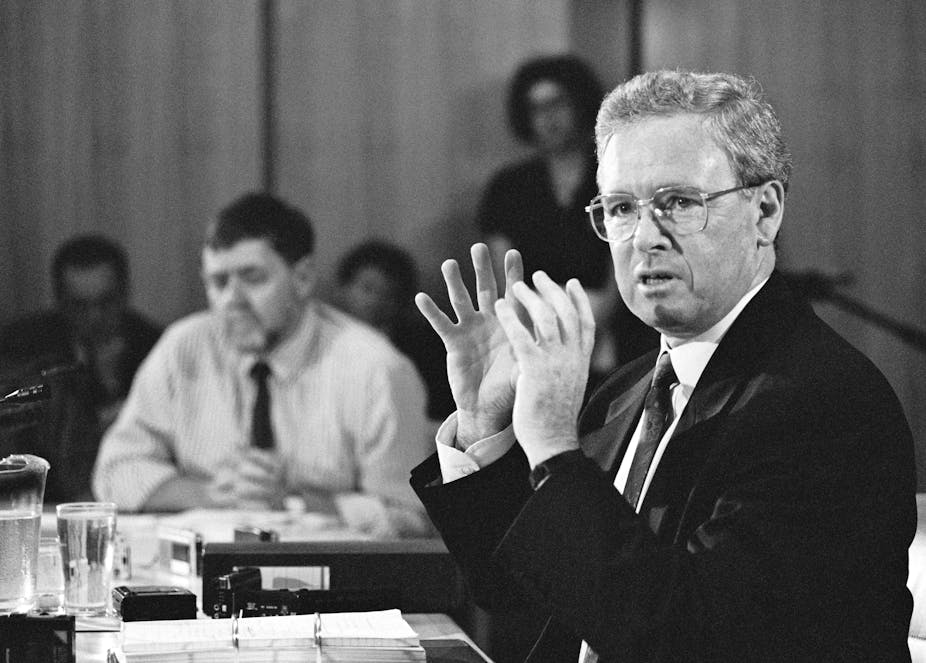Prime Minister Malcolm Turnbull’s decision to bring forward the 2016 budget statement by one week to May 3 paves the way for the passing of supply bills, in case an election is called on May 11.
The normal budget date for several decades has been the second Tuesday in May (May 10th this year) at the beginning of the final parliamentary session of the financial year. This is a matter of convention not an official requirement.
For most of the twentieth century (1901-93), the Federal budget was delivered after the end of the financial year on June 30. The general view was that the review of the old budget and planning for the new were complementary activities. It made sense that they were finalised together once the current financial year was completed and the figures had been collated and discussed.
The date of the budget was commonly set at the beginning of the spring session of Parliament in August. This was, nonetheless, a movable feast with budgets also brought down in September or October, including the first Federal budget on October 8, 1901. Late postponements were not uncommon, especially in the earlier years of Federation. In July 1905 new Federal Treasurer, Sir John Forrest, stated the budget would be delivered “sometime in August”.
On July 27, 1917, Forrest postponed the budget at less than a week’s notice, “owing to the state of his health and for other reasons”. Forgivable perhaps – it was his fifteenth budget, he was 70, and died the following year.
May takes hold
By the time Ralph Willis introduced the first May budget for the Keating government in 1994, thinking had decisively shifted towards agreeing income and expenditure plans for the coming year before it commenced (although such ideas had been discussed by parliamentary committees as far back as 1954). It reflected similar thinking across other nations such as the UK where budgets, from the 1980s, were mostly brought forward to March, prior to the end of their tax year on April 5.
The change in Australia appears to have been driven by outgoing Treasurer John Dawkins, who secured Cabinet support for the idea before leaving the post the previous December. It also left less time for postponement and prevarication.
A precedent, though, does exist for shifting the May budget date to accommodate an early election. The March 2, 1996 election brought the first Howard ministry to power. The new Coalition government arrived with a mission to cut public expenditure and weaken the power of the trade unions. The budget, Peter Costello’s first as Treasurer, was held on August 20, a day after the so-called “Canberra riots” when trade union members marched on Parliament House to demonstrate against these threats.
The delivery of the budget speech in Parliament during the evening (normally 7.30pm AEST) after local trading and financial markets have closed, is a practice that appears to go back to the beginning of Federation and well beyond in the case of the individual colonies. This was thought to avoid the risk of speculative reactions to commercially sensitive budgetary announcements.
The evolution of the budget ‘lock-up’
When Prime Minister Ben Chifley (1945-9) granted parliamentary journalists early access to budget information to complete their morning editions on time, the now-infamous media “lock-up” was created. Sealed copies of the papers were also delivered around the country to satellite lock ups.
Today, hundreds of journalists are given access to the papers in the afternoon of budget day (normally 1.30pm) under confined conditions and on the understanding that there is an information embargo prior to the delivery of the budget. Mobile phones are not permitted. Treasury aides are on hand to help interpret the numbers and, since Paul Keating’s time in office, the Treasurer makes a media appearance at the Parliament House lock-up to spruik the qualities of the budget.
John Kerin delivered an afternoon budget in 1991, arguing that a later time was anachronistic given that electronic financial markets now operated 24 hours a day. As part of this change, he also abandoned the lockup. Dawkins, however, restored both traditions the following year but without the former satellite lock ups — no surprise, perhaps, given the promotional opportunity Keating had created at the Canberra “confinement”.
That lock-ups occur earlier in the day in Canada and New Zealand also points to the publicity and educational aspects of the modern day practice more than the timing of the next day’s newspapers.
In Canada, the lock up includes members of the opposition party to help them prepare a detailed response. In Britain the opposition party only learns of the budget details as it is delivered, making the required immediate response a challenging task. In Australia, the opposition, which participates in a separate lock-up (as do minor parties and lobby groups), has a more leisurely couple of days to prepare its response.

